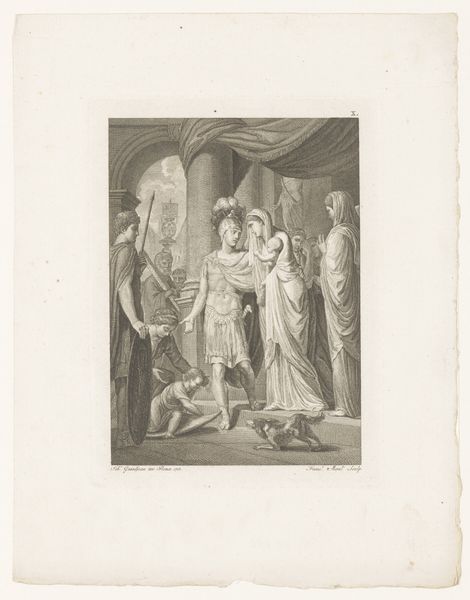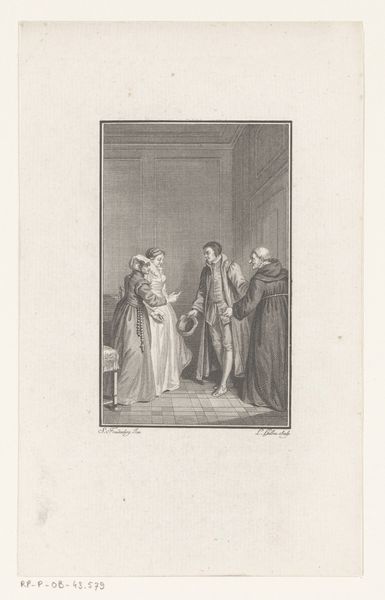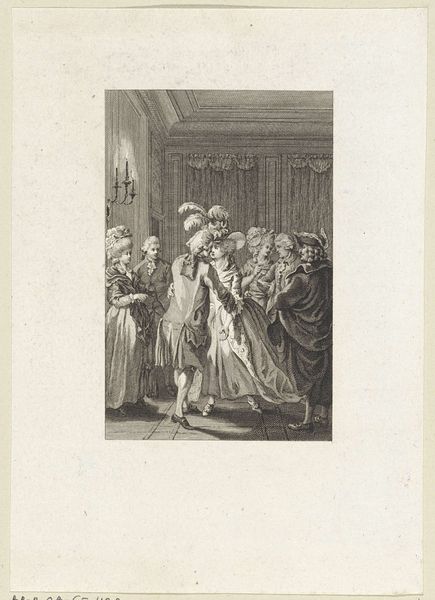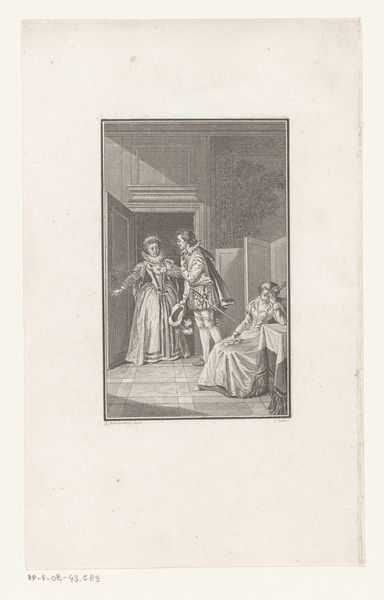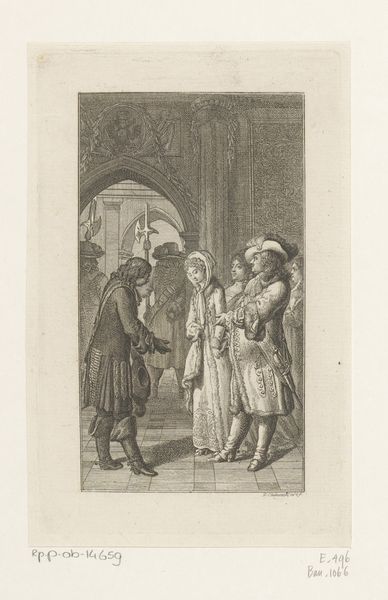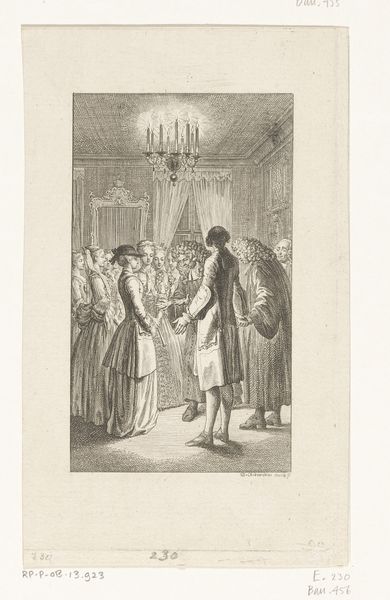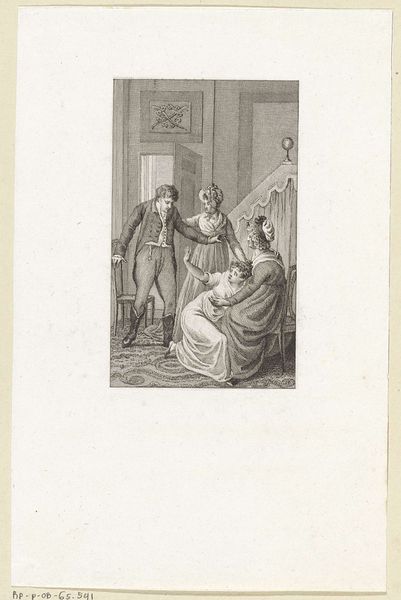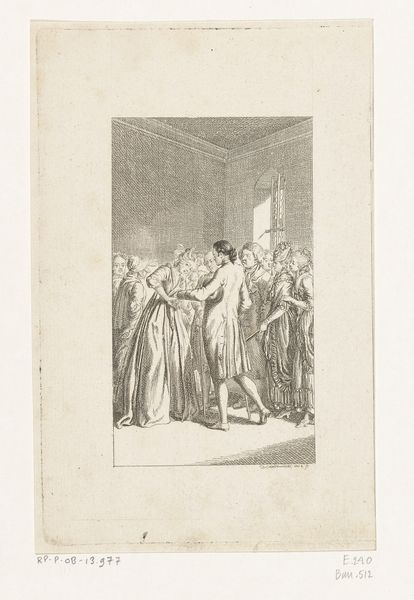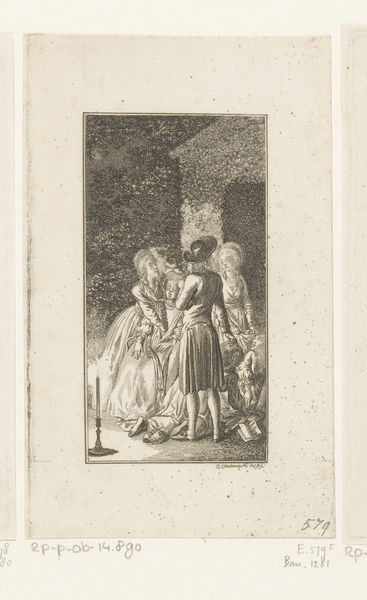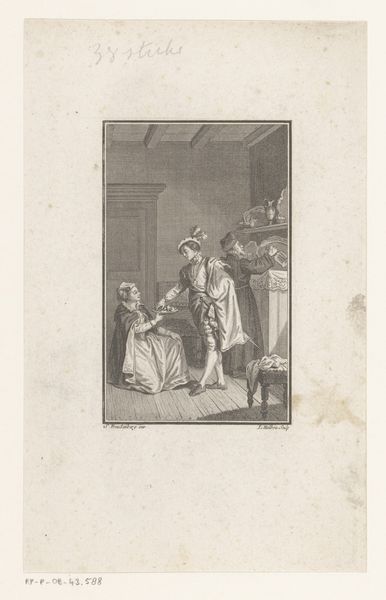
drawing, print, engraving
#
portrait
#
drawing
#
neoclacissism
# print
#
old engraving style
#
figuration
#
pencil drawing
#
line
#
genre-painting
#
history-painting
#
engraving
Dimensions: height 158 mm, width 97 mm
Copyright: Rijks Museum: Open Domain
Editor: Here we have Daniel Nikolaus Chodowiecki's 1784 engraving, "Henriettes vader leest de brief van Karl," currently housed at the Rijksmuseum. It has such an intimate feel, doesn’t it? It seems to depict a very private family moment. What stands out to you in this piece? Curator: What interests me immediately is the social and material circumstances of printmaking in the late 18th century. Engravings like this were produced through labor-intensive processes. Consider the artist's skill in manipulating metal and acid, the printer's role, and then the dissemination of these images through a market that catered to a growing middle class. How did this accessibility challenge traditional notions of artistic value tied to unique, handcrafted artworks? Editor: That’s fascinating. So you’re thinking about who had access to this image and how that changed its significance? Curator: Exactly. It's not just about the narrative scene. The materiality of the engraving itself — the lines etched into the plate, the ink transferred to paper – and its availability, shape its meaning. Was this print intended for mass consumption or a select clientele? Think about how the act of reproduction impacts the aura, if you will, of the artwork. Editor: That’s a really helpful way to think about it. I hadn’t considered the materials themselves as directly informing the meaning. Curator: What about the paper quality itself? Is it rough, suggesting a cheaper, widely distributed product, or is it fine, implying a wealthier patron? All these material considerations feed into the broader social context. Editor: This gives me a completely new perspective on looking at prints. I will definitely pay more attention to the materials used, because even that is informative in its own way. Curator: Absolutely. By understanding the production process and its intended audience, we get a richer understanding of art's place in society.
Comments
No comments
Be the first to comment and join the conversation on the ultimate creative platform.

